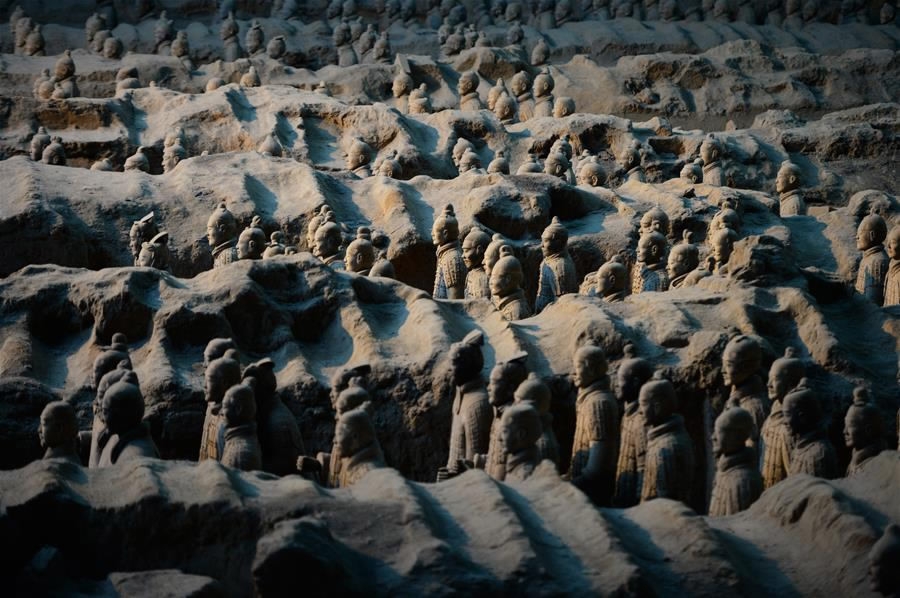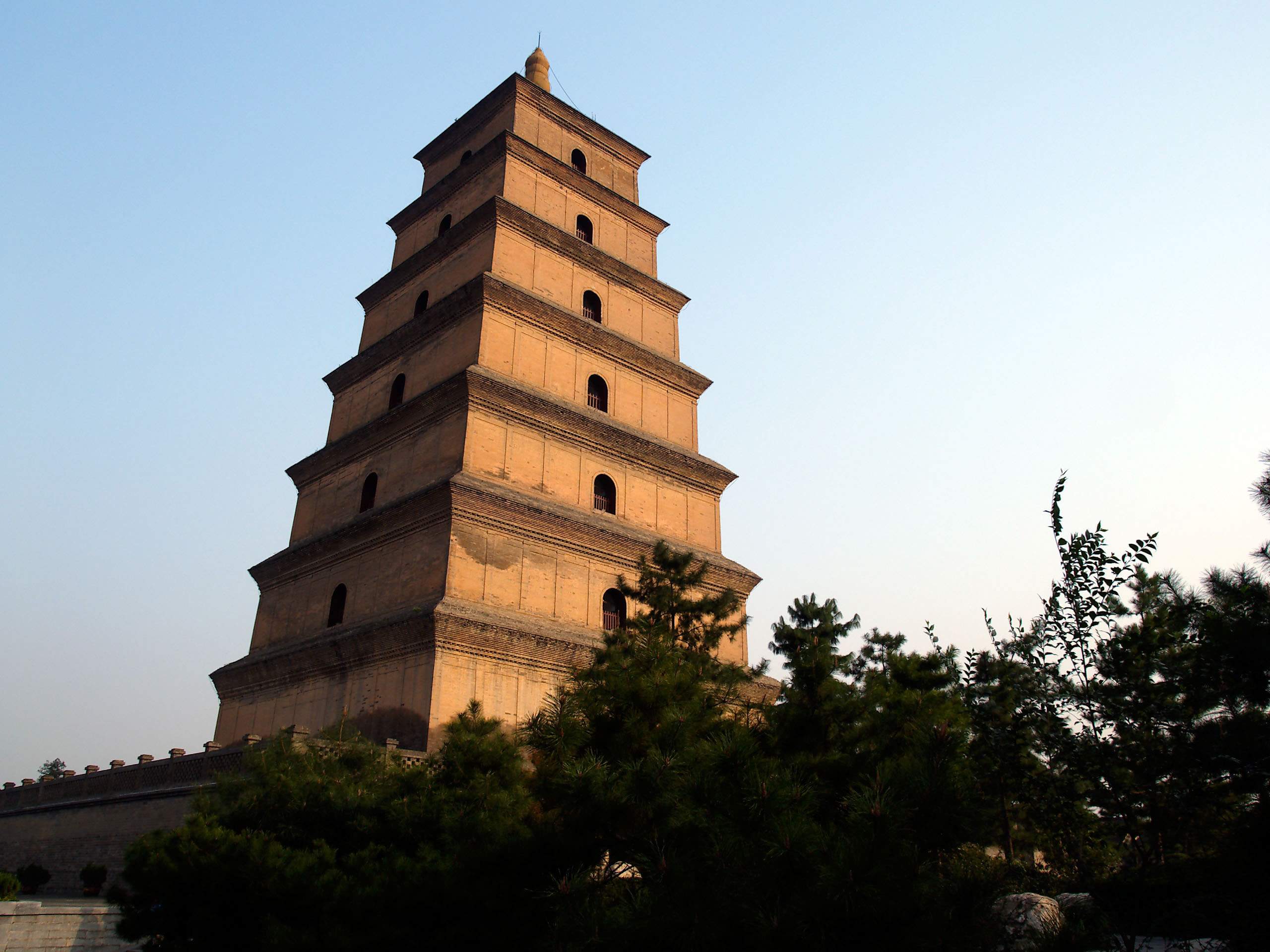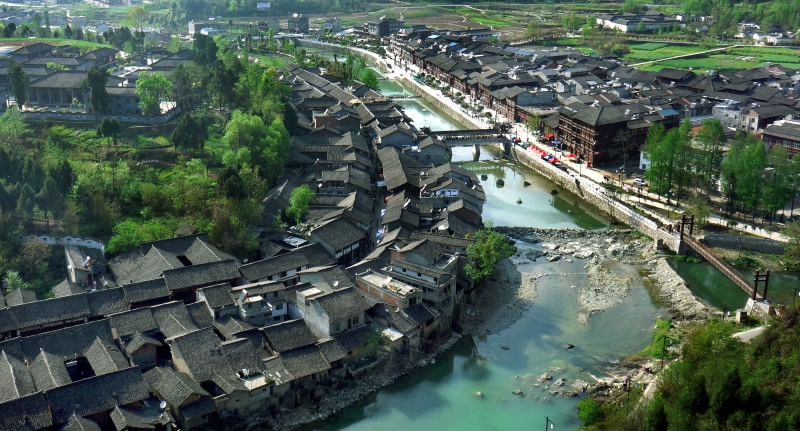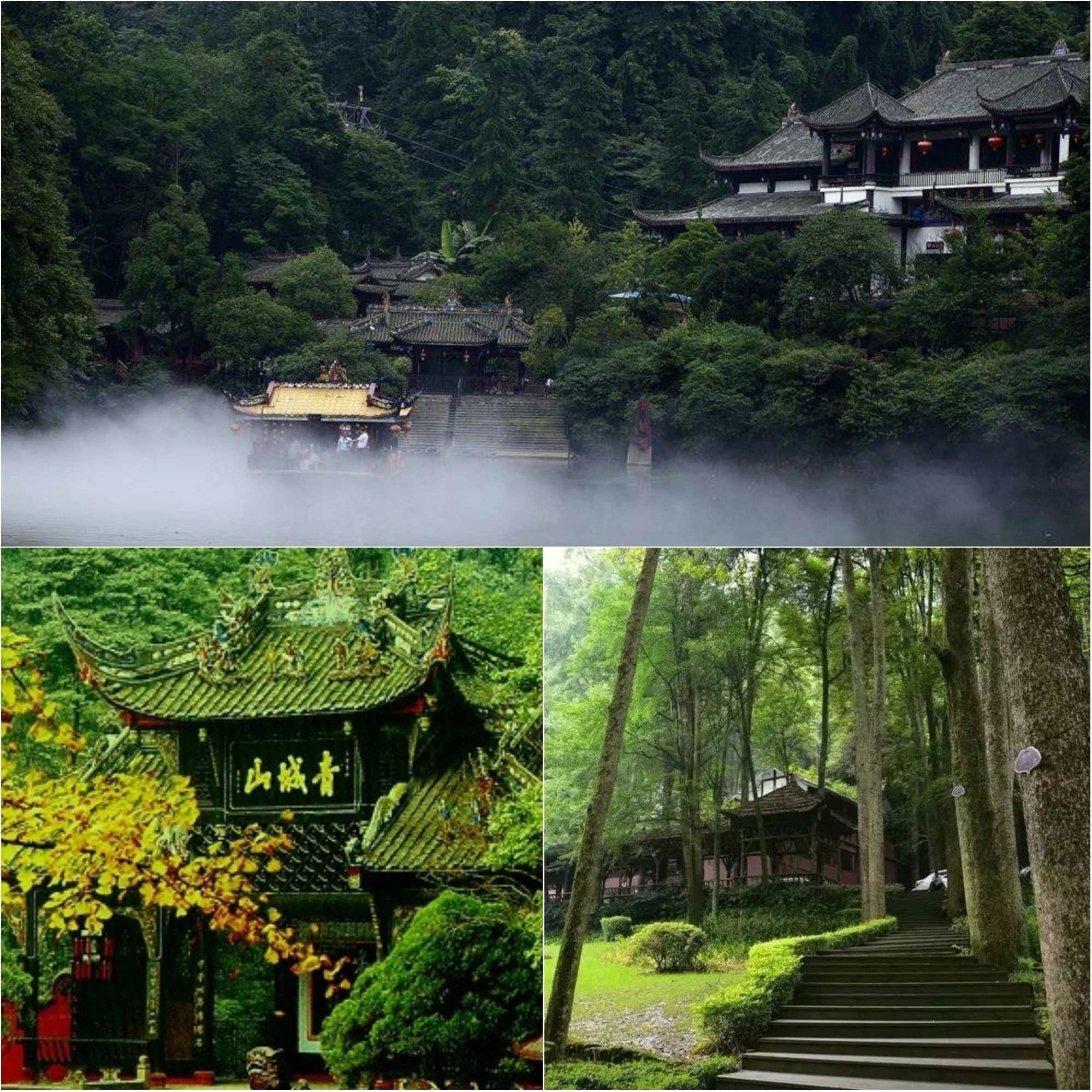
Culture
09:51, 06-Dec-2017
What can you see along the Xi'an-Chengdu high-speed railway?
By Li Bin

The long-awaited Xi'an-Chengdu high-speed railway has finally opened, and travelers are excited.
The 643-kilometer passenger line greatly reduces the travel time between the two cities from 16 hours to just three, enabling the residents of one city to travel to the other, and vice versa, within one day.
Xi'an, capital of northwest China's Shaanxi Province, and Chengdu, capital of southwest China's Sichuan Province, both boast rich tourist opportunities.
Today we're taking you aboard the train and giving you a glimpse of the highlights along the way, starting at Xi'an and traveling all the way down to Chengdu.
Ready?
Xi'an
The moment you walk out of the train station, you will be awed by the immense, well-preserved city wall that encircles the downtown area. The fortifications of Xi'an, re-constructed in the 14th century, stand 12 meters tall and stretch some 14 kilometers. Along the top of the wall is a walkway that would take hours to cover. In light of that, bicycles have become a popular way of exploring the walkway.

Xinhua Photo
Xinhua Photo
Another must-see is the Mausoleum of Qin Shi Huang and his Terracotta Army, which is located 40 kilometers east of the city center.

Xinhua Photo
Xinhua Photo
The Shaanxi History Museum is the perfect place to travel through time and witness the path of Xi'an's development, as well as see priceless historical objects unearthed in and around the city. The museum is free of charge. However, visitors have to apply for tickets at the windows. Be warned, it's a long queue.

CGTN Photo
CGTN Photo
Sitting at the very center of the city are the Bell Tower and the Drum Tower, both of which were used to tell the time in the Ming Dynasty.

Bell Tower (upper) and Drum Tower /CGTN Photo
Bell Tower (upper) and Drum Tower /CGTN Photo
To the south of the city are the Giant Wild Goose Pagoda and the Small Wild Goose Pagoda.

Giant Wild Goose Pagoda /Photo via wikimedia.org
Giant Wild Goose Pagoda /Photo via wikimedia.org
The Muslim Quarter cannot be missed if you're a foodie. Here, you can taste the best lamb and beef as well as famous local cuisines such as pita bread soaked in lamb soup, Chinese hamburger – marinated meat in a baked bun – cold rice noodle and many more.
Hanzhong
Located at the headwater of the Hanjiang River, this city in southwest Shaanxi borders with Sichuan Province and its dialects resembles that of the Chengdu-Chongqing dialect.
Popular tourist sites include the Shimen Plank Road that is built along the face of a cliff at the Shimen Reservoir.

Photo via sohu.com
Photo via sohu.com
Museums are usually not especially remarkable in cities, however, the Hanzhong Museum is particularly unique as it was built on the original site of the palace used by Liu Bang, founder of the Han Dynasty. The palace was long gone but the local government decided to build the museum with a nod to history and mimic the palace's original look.

Photo via weibo.com
Photo via weibo.com
Qingmuchuan Ancient Town preserved a considerable amount of old architecture dating to Ming and Qing dynasties.

Photo via qmcgz.com
Photo via qmcgz.com
In the spring, the region's colorful flowers burst into bloom, attracting a large number of tourists.

Xinhua Photo
Xinhua Photo
Guangyuan
Guangyuan was previously known as Lizhou, the birthplace of Wu Zetian, the only woman in Chinese history to bear the title Empress Regnant. In Huangze Temple, you can discover everything you want to know about Wu Zetian's life and times.

Photo via sohu.com
Photo via sohu.com
This small city in northern Sichuan Province is an ancient city, notable for its relics and tombs. The most iconic of which is the Thousand Buddha Cliff that stretches along the east bank of the Jailing River for almost 400 meters. Today, the site preserves more than 7,000 Buddha statues of all sizes.

Xinhua Photo
Xinhua Photo
Chengdu
With its pandas, spicy food, tea and laid back lifestyle, Chengdu has won the hearts of millions of visitors. The city has not moved its center in the past 3,000 years and has never changed its name.
People say that once you've set foot here, you will never want to leave.
To the north of the city are the Sichuan Giant Panda Sanctuaries where you can get up-close with China's beloved, world famous animal.

Xinhua Photo
Xinhua Photo
To the west lies the Kuanzhai Lanes, also known as the Wide and Narrow Lanes, which were first built for soldiers during the Qing Dynasty. Now, they're famous with tourists for their various kinds of local gourmets.
And there's also Du Fu's Thatched Cottage. Du Fu, a counterpart of Li Bai, was another notable poet in the Tang Dynasty. He left Xi'an to take refuge in Chengdu during a rebellion. With the help of his friends, he built the thatched cottage along the Huansha Stream.

Photo via baidu.com
Photo via baidu.com
On the outskirts of the city lies the Mount Qingcheng and the Dujiangyan irrigation system. Mount Qingcheng is one of the most important centers of Taoism in China. It has 36 peaks, with the highest standing 1,260 meters above sea level.

Photo via xinhuanet.com
Photo via xinhuanet.com
The Dujiangyan irrigation system was first constructed around 256 BC in the Qin Dynasty and is still functional today. It stands on the Minjiang River, the longest tributary of the Yangtze River. It is thanks to this irrigation facility that the Chengdu Plain becomes the "Country of Heaven" and the "Land of Abundance".

Xinhua Photo
Xinhua Photo
Two featured areas that cannot be left out are Jinli and Chunxi Road. The former is a popular dining area that resembles the traditional architectural style of western Sichuan. Here, you can find many aspects of the present-day urban Chengdu lifestyle: Teahouses, bars, theaters, handicraft stores and local snack vendors.
The Chunxi Road is in downtown Chengdu. It is a trendy and bustling commercial strip whose history dates to 1924, and over the years, It has become a symbolic street in Chengdu.
The high-speed railway links three of the most developed cities in west China, namely Xi'an, Chongqing and Chengdu, in a move which will surely continue to boost the development in and around the "golden triangle" formed by these cities.

SITEMAP
Copyright © 2018 CGTN. Beijing ICP prepared NO.16065310-3
Copyright © 2018 CGTN. Beijing ICP prepared NO.16065310-3